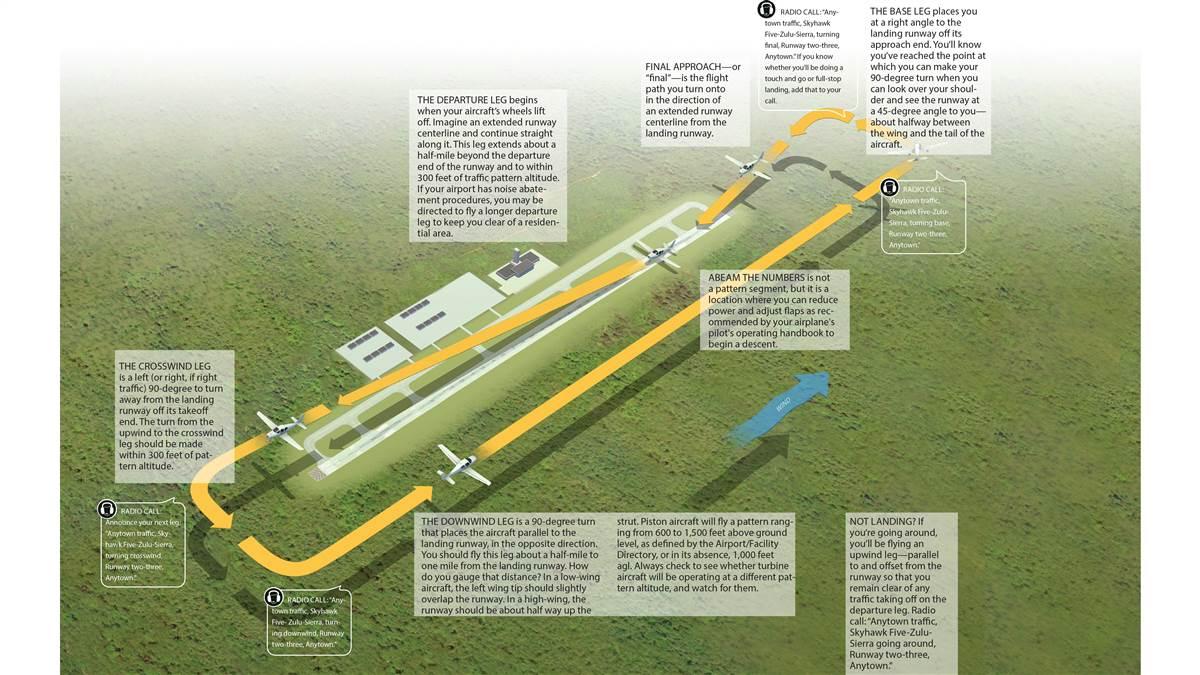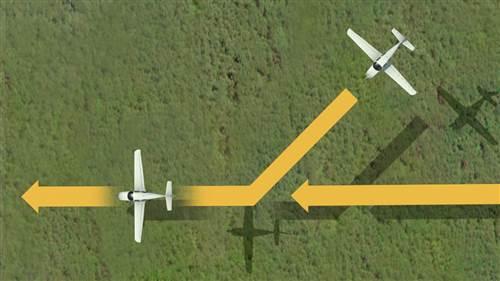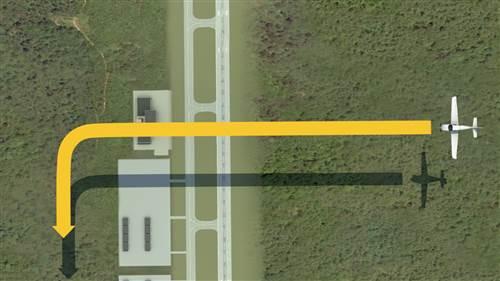Go with the flow

Traffic Pattern
You’ll spend a lot of time in the traffic pattern—so much so that it will become like your favorite pair of sneakers. From takeoff to touchdown or go-around, here are the legs and suggested radio calls for each segment of the pattern. Assume left traffic at a nontowered airport. Note that the Air Safety Institute’s Operations at Nontowered Airports Safety Advisor suggests making all radio calls before “turning the corner” so as to give other traffic a better idea of where to look for you. And you’ll need to look for traffic, too, so be sure to lift a wing (in a high-wing airplane) and check before turning.
Entering the pattern

Entry 1
Forty-five-degree entry to downwind—Recommended by the Aeronautical Information Manual, this entry requires you to fly a 45-degree angle to the midpoint of the downwind leg, at which point you will join the flow of traffic on the downwind at the specified pattern altitude. It enables you to more easily see and be seen as you enter the pattern.

Entry 2
Straight-in—As its name suggests, this is a straight-line entry to the final approach to the landing runway. An aircraft on a practice instrument approach usually is on a straight-in.

Entry 3
Mid-field downwind—Sometimes employed when entering the pattern from the opposite side, the aircraft flies at pattern altitude at a midfield point perpendicular to the runway and turns 90 degrees to join the downwind leg.

Jill W. Tallman
AOPA Technical Editor
AOPA Technical Editor Jill W. Tallman is an instrument-rated private pilot who is part-owner of a Cessna 182Q.
Topics:
Technique


